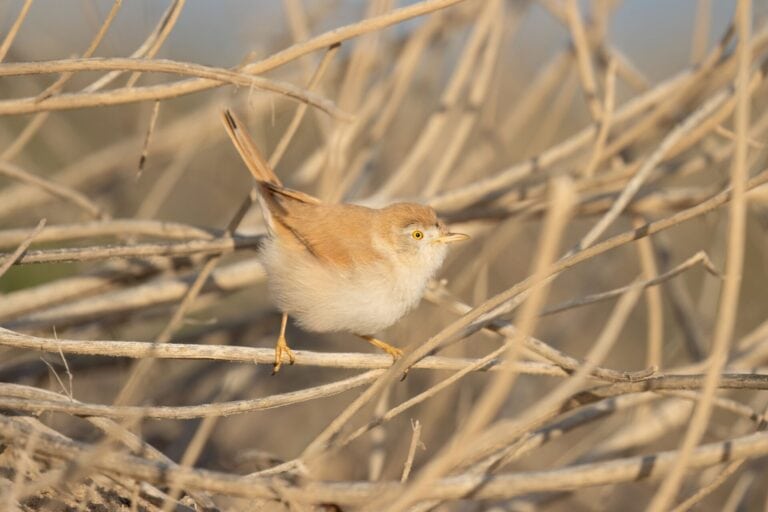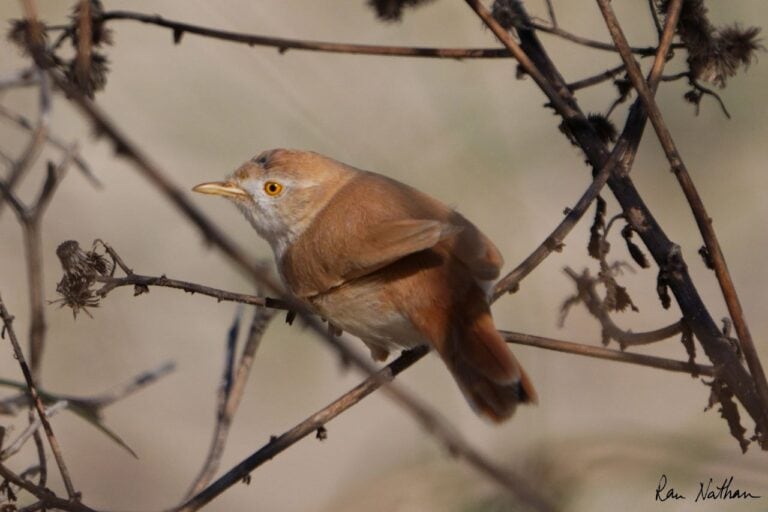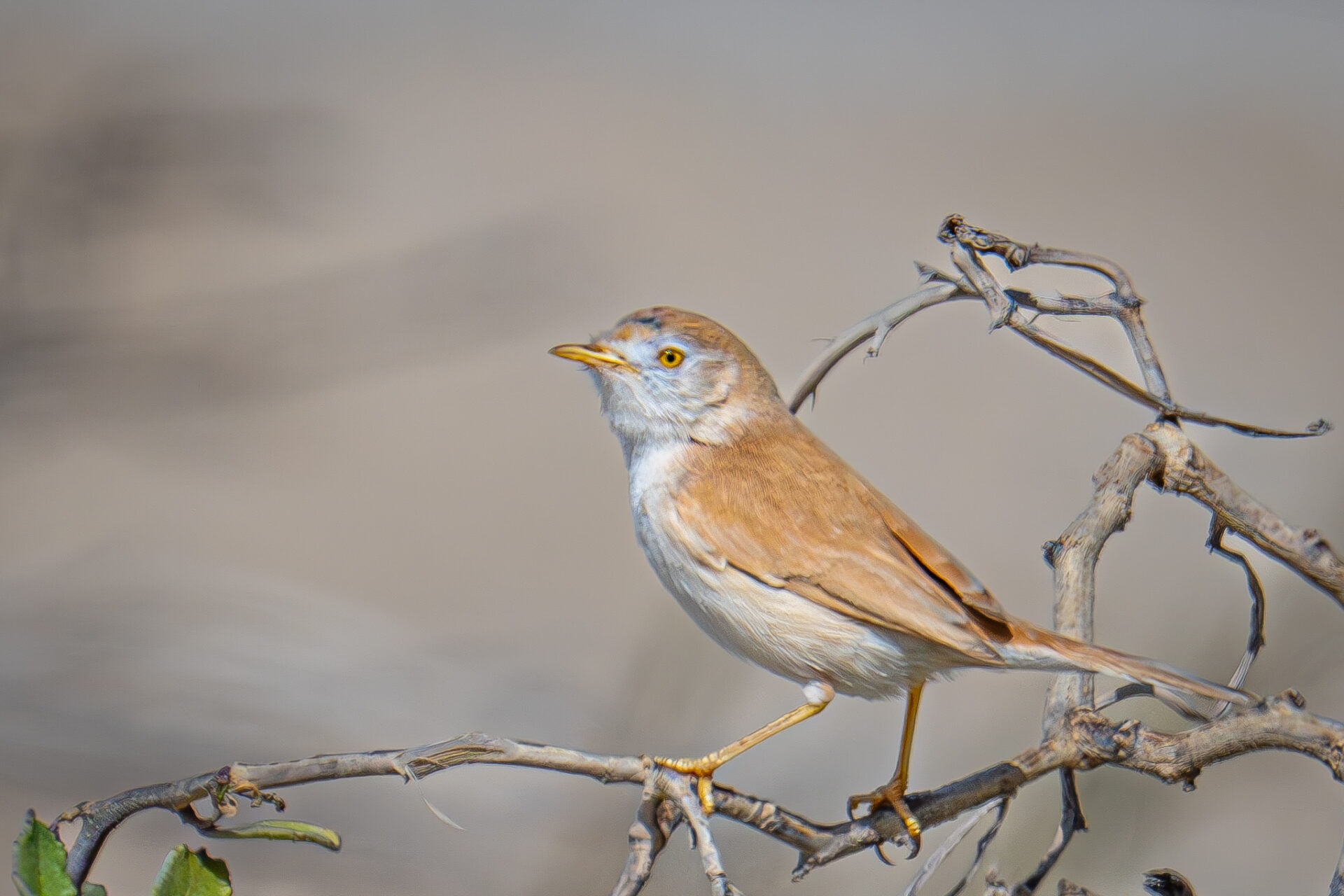The African warbler is a cute little bird whose appearance in Israel is so uncommon that a sighting of the small winged fellow in the Holy Land served as a rare and delightful surprise to bird enthusiasts.
The bird was spotted late March at the Student Beach, south of Haifa, by avid birder Sagi Shuel, who quickly realized the significance of his find and shared photographs with fellow Israeli birdwatchers. It was soon confirmed to be an African warbler, marking only the second recorded sighting of this species in Israel.
The African warbler is a species of songbird known for its arid habitat in sandy deserts extending from the Western Sahara and southwestern Morocco to Mauritania and Libya. Typically small in size, they range from 10 to 15 centimeters in length, with slender bodies and pointed bills. They are highly active birds, constantly foraging for insects and other invertebrates among foliage and vegetation.

Dr. Yoav Perlman, the director of the Israel Ornithological Center at the Society for the Protection of Nature in Israel (SPNI), highlighted the rarity of the sighting, recalling the first instance of an African warbler in Israel back in 2013 at Shikmona beach, also in Haifa.
“It is possible that it arrived here after migrating south in the winter, and on its return migration north in the spring it got lost and deviated from its course,” Dr. Perlman explained.
While some populations of African warblers migrate after nesting, their post-nesting destinations remain unclear. The species is rarely seen in southern Europe, with sporadic sightings reported in Spain, Italy and Malta. However, Israel stands out as the only location in the eastern Mediterranean basin where this remarkable bird has been observed.
The area where the African warbler was spotted holds particular ecological importance, according to SPNI’s Nature Surveys Unit: it lies along the boundary between Haifa and the Carmelite Castle, encompassing coastal dunes and the Kurkar ridge. These natural landscapes serve as crucial resting and refueling spots for migratory birds during their arduous journeys.

As migration season reaches its peak, Dr. Perlman emphasized the need to safeguard these vital habitats.
“On the coast of the Mediterranean Sea there are almost no areas left in their natural form, therefore the importance of the few areas that remain, such as the coastal dunes and the Kurkar ridge […] is very high,” he said. “Due to the enormous challenges that migratory birds experience along their migration routes, including habitat destruction, climate change and hunting, it is particularly important to maintain high-quality and rich resting sites in Israel.”
Fighting for Israel's truth
We cover what makes life in Israel so special — it's people. A non-profit organization, ISRAEL21c's team of journalists are committed to telling stories that humanize Israelis and show their positive impact on our world. You can bring these stories to life by making a donation of $6/month.






